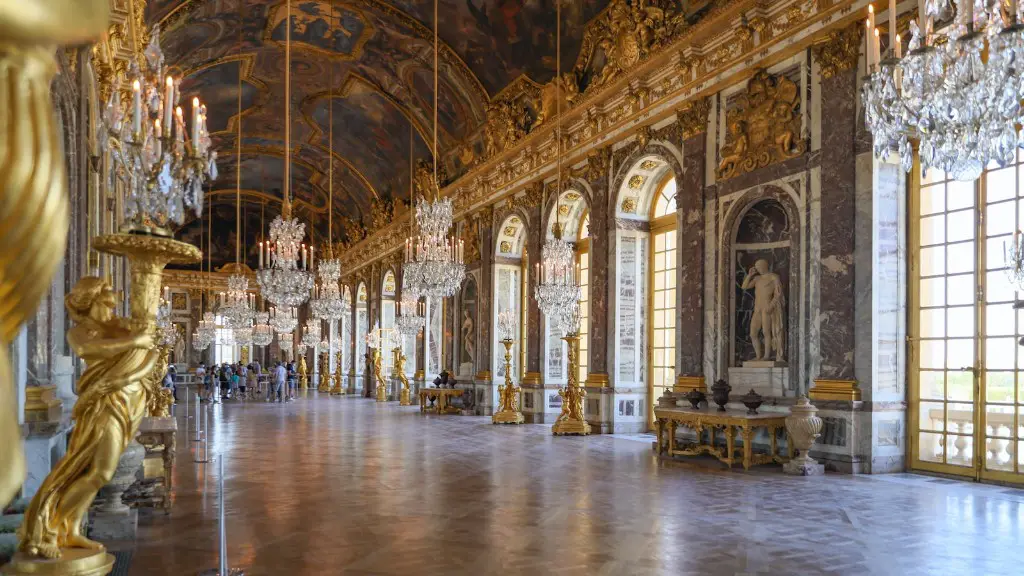Pompeii is a UNESCO World Heritage Site in Campania, Italy, most famously known for the destruction of its infrastructure and inhabitants in the year 79 A.D. due to the volcanic eruption of Mount Vesuvius. The remains of Pompeii remain, to this day, as a crucial part of the archaeological and historical record of the Roman Empire, and of the city itself.
Pompeii, located close to modern-day Naples, was an important port city in the Roman Empire, and had become a popular tourist destination for wealthy Roman citizens. At the time of the destruction, historians estimate that the city had a population of around 20,000.
The site has remained an important archeological discovery, as it offers us insights into everyday life in the Roman Empire. Scholars have been able to piece together many aspects of the city, such as its political systems and cultural norms.
The unique aspect of the disaster at Pompeii, though, is the sheer scale of the destruction. Buried under layers of ash and stone, the city was preserved in precise detail.
The ash and stone layers were thankfully, in a sense, a major part of the city’s salvation, as the layers preserved an array of artifacts, pottery, and artwork from the city. The ash also helped preserve numerous bodies of citizens of Pompeii, who can be seen in their hauntingly serene postures, frozen in time by the eruption. The bodies also preserved the DNA of the ancient population, offering crucial insights into their genetics, lifestyle, and even diet.
The preserved remains of Pompeii offer not only a unique and accessible glimpse into the past, but the detaily of the disaster have also been used to inform emergency response protocols today. Data collected from the disaster have been used to create emergency plans on how to respond to future catastrophes, such as volcanic eruptions or earthquakes.
The city was excavated in the 18th century, and since then, there has been extensive work to piece together the fragmented remains. Scientists and historians continue to uncover new details every day as they steadily work through the layers of ash and stone.
Key Historical Events
Pompeii had a long history of thriving civilization, and even today, the city is regarded for its significant impact on the development of the Roman Empire. The city’s key historical events include its foundation in the 6th Century BCE, which was followed by its periods under the rule of Greek and Etruscan kings, and eventually, being conquered by the Roman Empire in the 3rd Century BCE.
The city goes back even further in time, too, as it was a vital cultural, religious and trading hub for ancient populations. There is evidence of human settlement in the area as far back as 4,000 BCE, making Pompeii an important example of ancient culture.
After the city was taken over by the Roman Empire, it had become an important port and commercial centre, acting as a trade route between Italy and the eastern Mediterranean. The city continued to expand and develop in prosperity, with impressive infrastructure, such as public baths and a highly sophisticated water supply system.
Volcanology and its Impact
Pompeii’s association with the volcano Mount Vesuvius is a key part of its historical record. Vesuvius is the only active volcano on mainland Europe, and is located nearby Pompeii. In the year 79 A.D., the volcano erupted, destroying Pliny the Younger’s home and burying the city in thick layers of ash and rock.
Early accounts of the eruption have been taken from Pliny the Younger’s letters, which detail the ash and fiery debris raining down on the city, as well as its multiple stages of volcanism, with thunder, earthquakes and storms preceding the main eruption.
Vesuvius’ activity remains crucial to understanding volcanism, and to this day, it is closely monitored by experts, who are attempting to predict any new eruptions. Starting with Pliny the Younger’s reports, many data sets have been compiled, which detail the city’s destruction, offer insights into the peak of the eruption, and ultimately, record the nature of the volcanic activity at the time.
The impact of the disaster has further been studied by experts for its implications on emergency responses, and on attempting to predict future disasters. The modern world has much to thank the disaster for, as the incredible level of detail preserved during the disaster serves as an incredibly unique reference point for understanding, not just the past, but our future too.
Impact on Archaeology
Not only has the disaster in Pompeii offered us invaluable insights into the past, but the excavation of the city and its artifacts have revolutionized the world of archaeology. In the 18th century, a German engineer named Carlo Fea, who was appointed by King Francis I of Naples, was the first to start the excavation project.
He was able to share the many important discoveries of Pompeii, and also proposed a plan for the city’s conservation, which was later implemented. His work brought attention to the site, and sparked a new era of archaeological understanding and exploration.
Since then, the excavation of Pompeii has continued, offering us a complete picture of the city, its people, and its lifestyles. From fossils, pottery, and artwork, the discovered artifacts offer us a glimpse of the city two millennia ago, and help us understand the many aspects of the Roman Empire.
Present State
Today, Pompeii is open to the public, and it has become a major Italian tourist destination, and an important part of our shared understanding of the past. It is home to many interactive educational projects, which aim to bring the city to life, as well as providing detailed insights into the disaster and the lives of those affected.
The site remains an important and iconic symbol of the power of nature, and its remains offer an incredibly unique insight into the past. The excavations have inspired a myriad of works of art, literature, and cinema, and the preserved remains of Pompeii and its inhabitants continue to be studied, researched and visited.
Significance
Pompeii is a key example of both the past and present, and serves as a representation of the power of both nature and friendship. With its vast range of artifacts, it serves as a window into the world of two millennia ago, and highlights the ever-evolving nature of our relationships with the natural world.
The city and the remains of the disaster are a reminder that the decisions we make today can have crippling or even devastating effects in the future, and that we should remain aware of our own environment and the world around us.
Educational Programs
Pompeii also offers a range of educational programs, which give visitors an interactive and unique experience of the site. From workshops, retreats, and lectures, to guided tours and field schools, there are many ways to explore the history and remains of the city, and to gain insight into the disaster.
Moreover, the city has inspired many works of art, from Dante’s Inferno, to books, cinema, and even video games. It is a crucial part of our collective understanding of the past, and its story continues to be told and reinterpreted, two millennia after its destruction.
Conservation Efforts
Today, the site continues to be conserved, and is a key part of Campania’s identity. Conservation efforts are underway to help preserve the original artifacts and remains of the city as best as possible.
The city is protected by UNESCO’s World Heritage Site status, and has been carefully maintained and improved over the years to ensure its stability and longevity. It is also regularly closed to the public in order to carry out maintenance work, and to keep visitors safe from the dangers of its unpredictable environment.
Popular Culture
Pompeii has inspired a wide range of popular culture works, from books to movies, and its art and artifacts have been part of a variety of exhibitions and collections around the world. Its story and its tragedy are iconic, and are still talked about today.
The disaster has continuously been a subject of fascination, and many historic works of art, such as the Romanticist painting by Frederic Leighton, focus on the shocking destruction the city faced.
More recently, the city has seen a surge in popularity due to its role in popular culture works, such as the movie Pacific Rim, or the video game Mutant Year Zero.
Overall, Pompeii has played an important role in our collective understanding of the past, and its impact on our lives and our world today cannot be understated. It serves as a reminder of the power and beauty of nature, and of the resilience of the human spirit.

